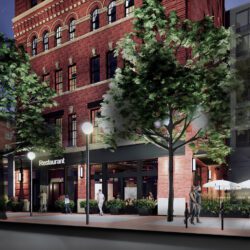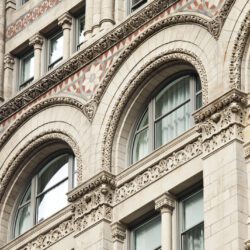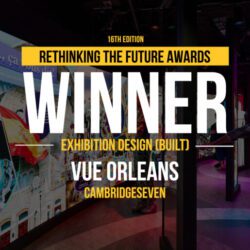by Anton Giuroiu
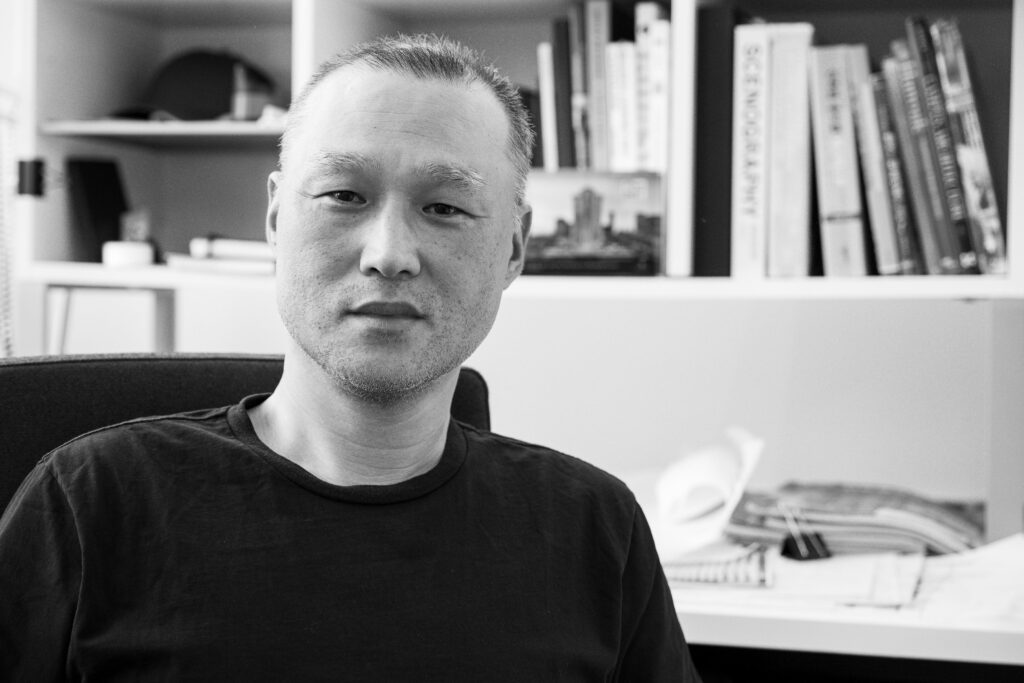
Yongjoo Kim, Principal at CambridgeSeven, is a leading architect known for his expertise in integrating modern design with historical contexts. With a background rooted in South Korean architectural traditions, Kim brings a global perspective to his work. He has played a pivotal role in projects like the Four Seasons Hotel in New Orleans and the Vue Orleans cultural exhibit, where his designs emphasize both innovation and respect for historical significance. Kim’s approach is marked by a strong focus on collaborative design, ensuring that every project meets both aesthetic and functional needs.
What inspired you to become an architect?
As a young man, I was influenced by the presence of an architect in my family—my father, who studied architecture design in South Korea in the early 60s. I remember looking through his bookshelf, filled with books and sketches, and one book that stood out to me was “In Praise of Architecture.” The book was written in the late 50s by Italian architect Gio Ponti. It was a small, pocket-sized book filled with essays and sketches that inspired me to appreciate nature and understand how architecture plays a vital role in life.
I was naturally good at crafting things with my hands. I briefly considered becoming a sculptor and going to art school, but I realized that architecture was the perfect way to combine my interests in technology, construction, and nature. My mother even visited a fortune teller to help guide my decision about schooling. They told her that if I chose to go to medical school, I would become an excellent surgeon because of my steady hands. Instead, I decided to bring those same skills into architecture.
What are CambridgeSeven’s design philosophy and key influences, and how did these evolve?
CambridgeSeven was born out of the collaboration of different young people—architects, artists, graphic designers, and more. Naturally, we are a very collaborative group, though working with such a large team isn’t always easy because of differing opinions. In Korea, I worked in another very famous office, but it was structured with a hierarchy where the two partners didn’t collaborate to work on the same project. I chose to join CambridgeSeven because of this emphasis on collaboration. I’m not someone who excels at doing everything by myself, so I appreciate the ability to collaborate and receive feedback from a team. This process of exchanging ideas is how I thrive creatively.
Even outside of the office, we continue our conversations, whether it’s golfing with colleagues or other activities. While many companies strive to achieve this level of collaboration, at CambridgeSeven, it’s just natural. Over the past 20+ years, I’ve worked on a wide variety of projects—museums, hospitality, commercial, large and small offices—which has allowed me to be part of many teams and bring new perspectives to each project.
What is your favorite project, and why does it stand out?
My most memorable project was also my most challenging one—the Arcus Foundation headquarters in Kalamazoo, Michigan. This wasn’t a flashy project, but it was the most difficult because I had to create something meaningful and convince the client to invest in it. We were using new technology to create an angular glass arch with a glass roof next to an old train depot and with a beautiful winter garden. The structural support was complex, and it was the first of its kind in the country.
I struggled, but I had an idea and collaborated with a Montréal-based engineer to bring it to life. This project motivated me to continue pursuing breakthrough, difficult projects. It eventually won a preservation award, and adaptive reuse became one of my favorite project types. Through this experience, I learned the importance of trial and error.
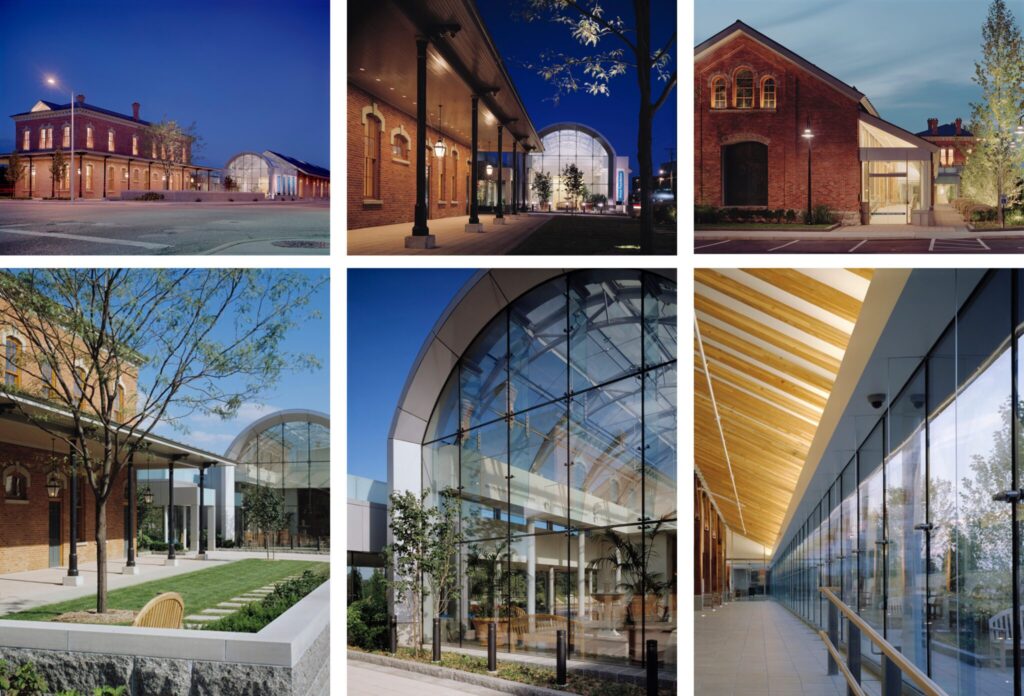
What is your favorite architectural detail?
I have a deep appreciation for honest structural connection details. For instance, where big roofs and arches meet columns. I’m fascinated by how different elements come together and prefer not to hide these details but rather to embrace them, showcasing the forces at play. My favorite architect is Carlo Scarpa, an Italian architect from the 40s and 50s because his work is so honest. He brings different materials together without hiding their connections, whether it’s a door hinge or where a column meets a roof.
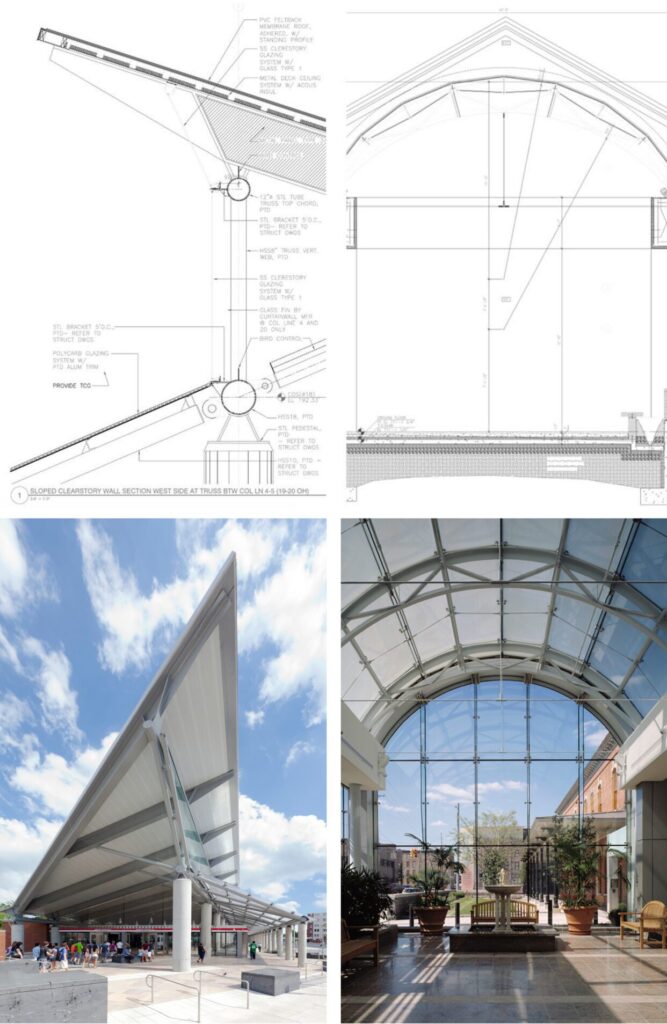
Do you have a favorite material?
Steel is my favorite material. I find it amazing because of the way it allows structural connections to make space happen. Take the Brooklyn Bridge, for example—it’s the most amazing bridge ever, particularly because of its cables made from very small individual steel fibers. Steel can do so much more than many other materials and has significantly contributed to human progress. It’s the leading material in many projects, from skyscrapers to space stations, allowing us to move forward as a society.
What is your process for starting a new project?
When starting a new project, I visit the site and learn as much as I can about the program, the site’s history, and relevant projects. I conduct thorough research, but I don’t let all this data overwhelm me. Instead, I like to sit calmly and wait before quickly starting my sketches. The waiting period is very important to me. I compare it to fermenting kimchi—it needs to sit for a long time to develop the right flavor. After this waiting period, I can move much more quickly and confidently.
How do you balance creativity and practicality in your designs?
Creativity and practicality feed each other. For example, look at the iPhone—its functionality is perfectly integrated with its shape, weight, and lightness. The design elevates this practical object. When practical design works well, it can become something very creative. Sometimes, a seemingly crazy idea can turn out to be practical. When something is made well, it achieves a balance of both.
What role does the surrounding environment play in your architectural projects?
The surrounding nature and context are part of our DNA. The environment needs to work in harmony with the architecture. Some people apply a cookie-cutter approach no matter the location, but I believe it’s essential to consider factors like sun angles, wind direction, and other environmental aspects. The urban context is also crucial. As architects, we only design about 5% of a building’s total impact, so we can’t dictate every aspect of urban redevelopment. Each building has its prophecies and attitudes, which is why we must respect our environmental impact about surrounding structures and nature.
How do you approach working with clients to understand their needs and visions?
The client relationship is very important to me, so I observe a lot of information from the start. When I share my ideas with the client, I want them to fully understand my concept and be able to process it themselves. This way, they can articulate it in their own words, creating a unified vision and need. The goal is to make my ideas become the client’s. It’s a collaborative process and should be treated as such. From there, we can enhance their vision together.
What architectural trends or movements do you find most inspiring?
In architecture school, we study a lot of history, so we understand how art movements, fashion, and architectural trends evolve. These movements and trends always have roots in the past—nothing is entirely new, and if it is, it has slowly emerged from history. I don’t really follow trends or movements, but I do find adaptive reuse to be particularly inspiring. It’s a hot topic right now, but it’s something we’ve been doing for thousands of years. I love it in all its forms because it’s the most fundamental trend in architecture.
I don’t even consider a brand-new building to be truly “new” because the site itself isn’t new. It’s still a form of adaptive reuse since the site has its history and life. This concept can be explored in many ways, and it reminds me of my time studying in Verona, Italy, where the blending of the old with the new and the future is a constant theme.
What new directions or architectural innovations is CambridgeSeven currently exploring?
We are always looking for new design methods and strive to keep up with current technology for the sake of design excellence. CambridgeSeven is not shy about exploring new technologies. While our projects don’t always pursue a technology-driven direction, we are enhancing our use of parametric design, particularly in massing and facade systems.
I recently attended an AI conference in New York City hosted by Microsole. The good news is that we’re not going to lose our jobs to AI, but AI will become one of our tools. Those who know how to use this tool well may have an advantage in the industry. Every architectural project is unique, as people bring different data and information to each one. AI will be a powerful tool to enhance our efficiencies and creativity. I’m interested in this direction and keeping an eye on how we can implement these tools in our practice to better position ourselves in the market.
What advice would you give to aspiring architects?
There are two things I would advise. When I was studying architecture in 1988 in Korea, senior professionals told me to look into other industries aside from architecture. At first, I didn’t agree with this advice. I grew to understand that this was because architecture is a compilation of everything—history, nature, design, and technology. Architecture isn’t just what’s on paper or what’s on the job site. It is part of your life: your hobbies, family, travel, and museums. All these things influence your architectural practice, but it takes a long time to understand this.
My advice is to explore other interests as well. Your life isn’t confined to the office from 9-6. Your experiences outside the office will always continue to influence your practice.
My second piece of advice is patience. As I mentioned earlier, the waiting process is the most important. You cannot successfully communicate your vision until you feel confident and have taken the time to deeply understand and think about it. When you wait and go through the process of life, you become a seasoned architect. Life goes in waves, and experiencing all of it allows you to tap into your architectural practice. You have to love yourself and learn not to blame yourself when you make mistakes. The best design comes from what you truly love; it should not be a struggle. When you have a real passion for your design and ideas, you’ll push them through to the end. If you rush and feel too nervous, you won’t like your design, and it won’t be a successful project.



